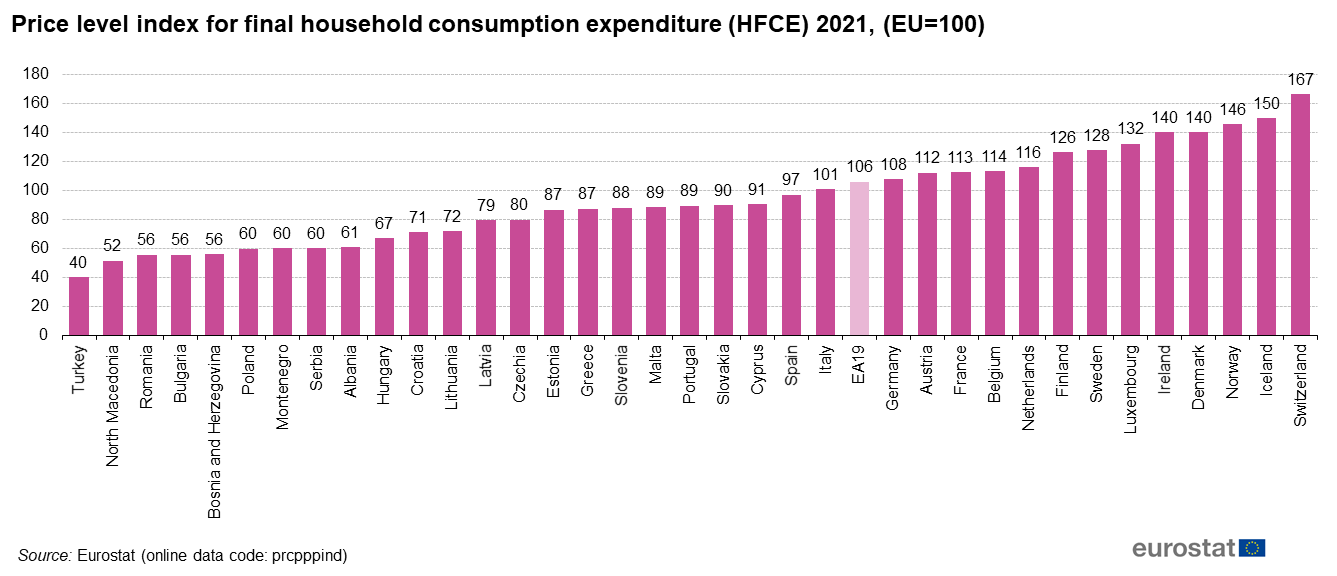The results are based on price surveys covering more than 2 000 consumer goods and services which were conducted across 36 European countries participating in the Eurostat-OECD Purchasing Power Parities (PPP) program.
In 2021, price levels for consumer goods and services differed widely across Europe. The highest price level among EU Member States was observed in Denmark, 40 % above the EU average, while in Romania and Bulgaria the price level was 44 % below the EU average.
Latvia came in 20 % below the EU average, making it more expensive than Lithuania, Croatia, Hungary, Poland, Bulgaria and Romania among its EU peers. Estonia is considerably more expensive at just 3 % below the EU average level.

An understanding of the differences in price levels is important in the comparison of economic data, such as gross domestic product (GDP), because higher relative prices could make an economy look healthier than it really is. Observing price level differences is also important in the analysis of the development of the EU's single market for goods and services, Eurostat said.
























